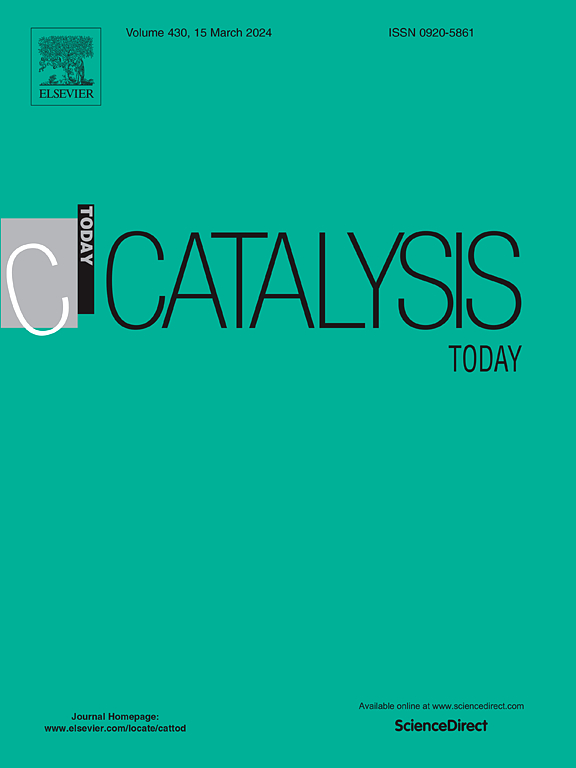Synthesis of TiO2-g-C3N4 for efficient photocatalytic degradation of Congo Red dye
IF 5.2
2区 化学
Q1 CHEMISTRY, APPLIED
引用次数: 0
Abstract
Heterogeneous photocatalysis is an efficient, cost effective and promising approach for pollution control and environmental remediation, however, the fast recombination of excitons inhibits the practical applications of photocatalysis. The construction of heterojunction is a viable solution that reduces the recombination of excitons by transfer of charge carriers resulting in improved catalytic performance. Here, the fabrication of a sunlight-active TiO2-g-C3N4 photocatalyst by the hydrothermal process for the degradation of Congo red dye is reported. After characterization, TiO2-g-C3N4 heterojunction was employed as a photocatalyst for the sunlight-light-assisted photodegradation of Congo red dye. The fabricated g-C3N4 and TiO2-g-C3N4 exhibited 52 % and 100 % photodegradation of 50 mL (100 mg/L) of Congo red dye by irradiation in sunlight for 180 min, respectively. The hydroxyl radicals were major species involved in the photodegradation of Congo red dye.
求助全文
约1分钟内获得全文
求助全文
来源期刊

Catalysis Today
化学-工程:化工
CiteScore
11.50
自引率
3.80%
发文量
573
审稿时长
2.9 months
期刊介绍:
Catalysis Today focuses on the rapid publication of original invited papers devoted to currently important topics in catalysis and related subjects. The journal only publishes special issues (Proposing a Catalysis Today Special Issue), each of which is supervised by Guest Editors who recruit individual papers and oversee the peer review process. Catalysis Today offers researchers in the field of catalysis in-depth overviews of topical issues.
Both fundamental and applied aspects of catalysis are covered. Subjects such as catalysis of immobilized organometallic and biocatalytic systems are welcome. Subjects related to catalysis such as experimental techniques, adsorption, process technology, synthesis, in situ characterization, computational, theoretical modeling, imaging and others are included if there is a clear relationship to catalysis.
 求助内容:
求助内容: 应助结果提醒方式:
应助结果提醒方式:


